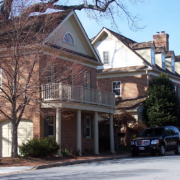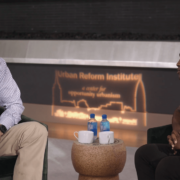Houston’s Blob is About to Eat Even More of East Texas…and We Should Embrace It
The Chronicle’s recent article debating the sustainability of Houston’s traditional “build more” approach to growth (“Houston became ‘the blob that ate East Texas’ by building big. Is it time for that to change?” August 27) frames the debate as if Houston can dictate whether people drive cars in the suburbs or ride transit in the densifying core, when in reality people make their own choices which we can accommodate and thrive or ignore and decline.
The debate completely misses the reality of our post-pandemic world. Remote work is now a permanent part of our economy, and it is creating a tidal wave of suburban and exurban growth as people realize they’ll no longer need to commute into the city on a daily basis. Houston can’t stop it, even if it wanted to. All we can do is try to accommodate it while keeping the core healthy and accessible to attract their dollars for discretionary shopping, restaurants, entertainment, events, health care, philanthropy, office visits, and more. And if we don’t maintain that accessibility – including prudent transportation investments – not only are they unlikely to visit, their employers are likely to leave as well along with their much-needed local property and sales tax contributions.
Houston’s great strength has always been embracing growth – suburban, urban, and the freeways to connect it all together. That formula has kept us the most affordable major metro in the country and always near the top in growth rankings. In other words, we’ve made ourselves extremely attractive to newcomers, especially diverse people of color and immigrants looking for affordable opportunity. We’ve got a product people want. Why would we want to radically change that? Especially to models like California with urban growth boundaries, constrained development, astronomical housing costs, traffic gridlock, and wasteful transit spending (LA has spent upwards of $20 billion only to lose 21% of its ridership pre-pandemic) resulting in a mass exodus of both people and businesses.
What Houston’s formula needs is tweaking, not throwing out the baby with the bathwater. For example, with growing concerns about flooding, the answer is not banning new development, but tightening runoff regulations on new suburban developments so they don’t flood us downstream. Every new development should have enough detention that the land releases even less water during a hard rain than it did undeveloped – then every new development would actually reduce flooding!
And when it comes to transportation investments, yes, many freeways are reaching realistic width limits, but that doesn’t mean we should give up growth for perpetual congestion or old, slow transit. We’ve proposed – and TXDoT is planning – an innovative next-generation mobility strategy: a network of MaX Lanes (Managed eXpress Lanes) ‘moving the maximum number of people at maximum speed’ by allowing direct point-to-point single-seat high-speed trips by transit buses and other shared-ride vehicles today, and even higher-speed zero-emission autonomous vehicles in the future. The network would enable Houston’s seven core job centers to scale from 626,000 jobs today to over one million jobs in the future while drawing employees from all across our ever-expanding region with a reasonable commute (even if they’re doing that commute less often in a remote work world). This is the type of climate-friendly innovative mobility solution that could attract substantial federal funding while also embracing suburban and exurban trends rather than hopelessly fighting them.
Finally, Houston’s unzoned urban core can continue to naturally densify as it has been doing successfully for at least two decades now – not because we’re trying to force it to, but because people – especially diverse young people – choose it. They choose it because we allow the free market to build and cater to that demand, including townhomes, apartments, residential towers, and walkable mixed-use complexes.
Which brings us full circle to Houston’s secret sauce: building what people want rather than what academic urban planners deem the ‘right’ way to live and get around. That strategy will always be a winner.
This piece previously appeared on Houston Strategies.
Tory Gattis is a Founding Senior Fellow with the Urban Reform Institute (formerly Center for Opportunity Urbanism) and co-authored the original study with noted urbanist Joel Kotkin and others, creating a city philosophy around upward social mobility for all citizens as an alternative to the popular smart growth, new urbanism, and creative class movements. He is also an editor of the Houston Strategies blog.
Photo: Yinan Chen via Wikimedia, under Public Domain.








